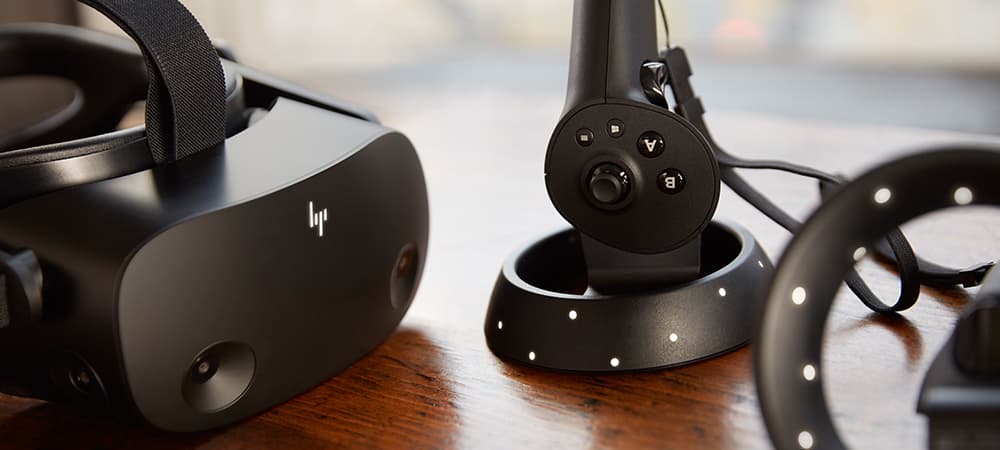Virtual reality (VR) has finally come of age. Nowadays, you’re able to choose between a variety of
advanced VR headsets, and there’s a wide array of VR games and applications that are easy to download. It’s a far cry from where the technology was 10 years ago.
With the VR revolution, we’ve also seen the rise of augmented reality (AR). Not only has AR gained widespread popularity in gaming, but it’s also been incorporated in a
variety of different industries. What’s the difference between AR vs VR, and how are they being applied for non-gaming purposes?
Find out the difference between augmented reality (AR) and virtual reality (VR), how these advanced technologies are being used in reality today across multiple industries, and how the projected value of these technologies will shape the future of
human computer interaction and
virtual gaming.
Augmented reality vs virtual reality
While augmented reality and virtual reality have similar names, but they’re actually very different. Let’s compare AR vs VR.
What is virtual reality?
In virtual reality, users get to interact with a virtual world. Users are brought into a simulated reality in which their sight and hearing is stimulated. The goal is to immerse the user into a virtual world and prevent them from seeing the real world. VR is about 75% virtual and 25% real.
Most of the time, virtual reality utilizes a
VR headset that’s equipped with speakers and a display that encompasses your entire vision. Since virtual reality requires a large amount of processing power, you may need to get a
VR gaming computer to run more intensive VR applications.
What is augmented reality?
Augmented reality amplifies your real-world surroundings by adding virtual features that the user may interact with. Unlike virtual reality, augmented reality doesn’t try to immerse the user and block out the real world - it just overlays graphics and animation on top of real-world environments.
AR utilizes a variety of different mediums, from headsets to apps to digital cameras.
Rising demand for AR vs VR
AR and VR are more popular than ever before, and both are trending upward. By 2020, the combined market size of virtual reality and augmented reality is expected to reach $150 billion. Gaming is largely responsible for the growing demand. It is predicted that there will be
216 million AR and VR gamers by 2025.
But gaming isn’t the only reason why AR and VR are gaining rapid popularity. Both technologies are seeing practical use in lots of different industries.
Applications for AR and VR
1. Entertainment
You’re probably most familiar with VR and AR when it comes to gaming. How is gaming on AR vs VR?
AR, on the other hand, offers gamers a more social gaming experience that’s not as visually immersive as a VR world, but is arguably much larger in scope. Pokémon Go and Harry Potter: Wizards Unite exemplify the AR game. In both games, you traverse the virtual map by moving around your real-life environment. The games use real-world locations to place virtual combatants and collectibles, and there’s a heavy emphasis on collaborating with other players.
But gaming isn’t the only kind of AR/VR entertainment. You can also use virtual reality to watch movies and to virtually attend concerts - there are also videos that are shot in 360 degrees so they can be experienced in VR. Furthermore, there are VR applications that simulate exotic destinations.
2. Healthcare
Both AR and VR have very important applications in the medical field. New surgeons can use virtual reality to practice difficult surgical procedures.
VR can also produce a three-dimensional representation of a patient’s anatomy so the surgeon can plan out the procedure ahead of time.
3. Education
Virtual reality is being implemented in job training. One of the earliest applications of VR has been in flight simulators for pilots-in-training. These flight simulators help pilots hone their skills in a safe and cost-effective way. VR also provides an immersive simulation space for other kinds of training, like for police, retail employees, and office workers.
4. Manufacturing
Virtual reality and augmented reality are improving safety and efficiency in the manufacturing industry. Plant managers can use virtual reality to simulate the production process and test assembly line configurations - which is helpful in identifying potential safety issues.
5. Real estate
The most obvious benefit to virtual reality in real estate is that potential homebuyers can virtually view a home, which saves time for both the homebuyers and for real estate agents. Real estate agents can even add virtual furniture to an empty home to make it appear homier.
6. Logistics
AR and VR are being used by businesses to improve productivity and safety in the logistics industry. Augmented reality (especially through use of smart glasses) can help new employees navigate a large warehouse and learn where to stock goods. Like in the manufacturing industry,
virtual reality can be used to practice safety procedures.
7. Military
Virtual reality saw its first real practical use with the military when the first flight simulators were developed. Nowadays, VR is also used to put soldiers through intricate combat simulations. Augmented reality, on the other hand, is incorporated via heads-up displays in vehicles, weapons, and eyewear.
Summary
Learn more about augmented reality (AR) and virtual reality (VR), and how these technologies are constantly evolving on
HP® Tech Takes.
Infographic sources:
Popular HP Virtual Reality (VR) Gaming PC & Accessories



















